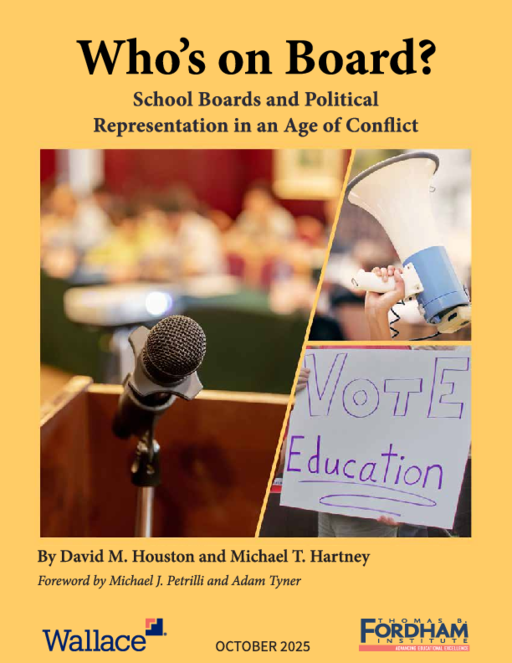- Author(s)
- David M. Houston and Michael T. Hartney
- Publisher(s)
- Thomas B. Fordham Institute
Research Approach
Researchers contacted school board members throughout the country. Although there is
no national directory of school board members, their names and email addresses are publicly available information, scattered across the internet on school district websites. In 2022, the America First Policy Institute (AFPI)—with which the researchers have no affiliation—completed the laborious task of combing school district websites for school board members’ names and email addresses, aggregating this information on its website.
Of the approximately 80,000 entries collected by AFPI, the researchers found 61,299 individuals with unique, viable email addresses and with school district affiliations that matched the National Center for Education Statistics’ records of school district names. They emailed these 61,299 people in December 2022 and again in January 2023, explaining the research project, and detailing the way in which they would keep responses as anonymous as possible—namely, how they would destroy all files linking names or email addresses to responses and not report any district-level results that would allow readers to make inferences about specific board members’ identities or views. A total of 5,346 individuals from 3,093 school districts completed the survey, for a response rate of 8.7 percent. This is a strong sample size, which allows the authors to say with confidence that their findings can be generalized.
Although respondents hailed from a wide variety of districts drawn from nearly every U.S. state, these individuals were not a random sample of all school board members nationwide. Also, the majority of the more than 13,000 school districts in the U.S. are small, rural, and
sparsely populated; meanwhile, the majority of students are concentrated in a subset of more densely populated urban and suburban districts.
Therefore, the researchers adjusted survey data in two different ways.
- The first approach tries to make the sample more representative of all school board members in the country. They calculated a specific weight for each respondent based on district-level characteristics such as total student enrollment, the percentage of enrolled students who are white, the percentage of school-age children living in poverty, and the population density of the district. Therefore, when analyzing the data using these weights, the proportion of school board members serving relatively small, low-income, white, and sparse districts in the sample is large, matching the proportion of such districts in the nation. The analyses using these weights provide the best available picture of America’s school board members as a group, and researchers describe the results as “nationally representative.”
- The second approach focuses on the number of students served by each school board member. For these analyses, they weighted each board member’s response by the total count of students enrolled in their district. This approach gives greater weight to board members representing larger districts and less weight to board members representing smaller districts. For example, a board member serving 10,000 students would receive twice as much emphasis as a board member serving 5,000 students. When using these weights, they describe results as “enrollment-weighted.”
The survey data were combined with other sources of information to compare school board members with their constituents. For example, researchers modeled some survey language after similar questions in nationally representative surveys, such as the Education Next Survey of Public Opinion and the Cooperative Election Study.
Survey data were paired with publicly available data on the demographic characteristics of the U.S. public and U.S. school districts from the U.S. Census Bureau’s American Community Survey and Household Pulse Survey, the U.S. Department of Education’s Common Core of Data, and the U.S. Bureau of Labor Statistics. Data were also used from the survey research firm Gallup for estimates of the party affiliations and political ideologies of U.S adults circa 2023 and from the Redistricting Data Hub for precinct-level results from the 2020 presidential election.

